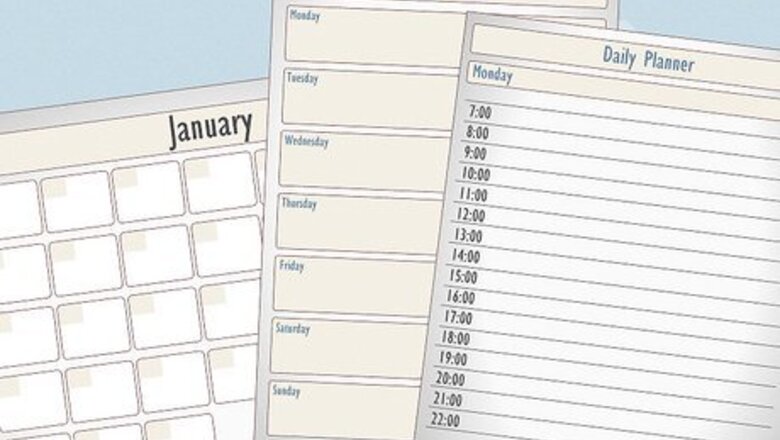
views
Crafting Your Own Planner
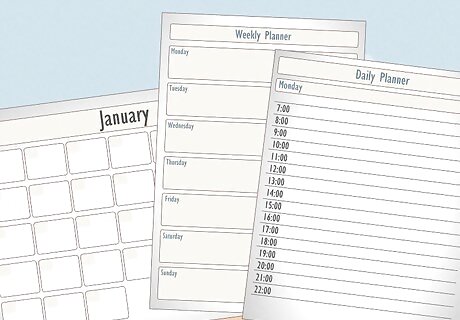
Decide what types of planning sheets you will include. Staying organized usually requires more than one type of planning list, such as a monthly calendar, a weekly calendar, and a daily to-do list. You could also use just a calendar with extended areas for writing notes and planning. Also, you can use post-it or sticky notes to add extra notes to your planner. Some people prefer to use digital planners, although these can sometimes be harder to personalize.
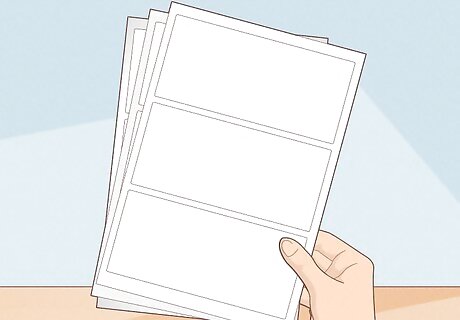
Choose your paper. One of the benefits of crafting your planner is that you can use any type of paper. Use what you have on hand, print planning templates, or make a trip to the craft store to choose prints that inspire you. Notebook paper offers a quick solution because you probably already have some in your backpack. Blank computer paper allows you an unstructured space to plan, which may work really well for people who are creative. Using templates makes it easier to get started and stay organized. Since you’ll be printing your own templates, you can choose what best suits your needs. Templates may take more work than notebook paper, but they will make it easier to get started with your planning since the calendar and planning spaces are already created for you. Try printed papers for a fun approach to creating your planner. Visit your local craft store for tons of design options. If you use printed paper, keep in mind how you will be using the planner when you pick your designs. For example, don’t choose all dark colors if you want to write directly onto the paper because you won’t be able to see what you wrote.
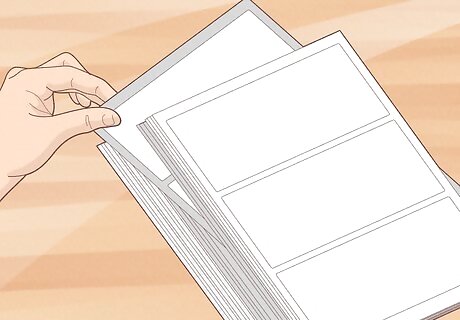
Put your paper in the order you want it to appear in your notebook. You can organize your paper to match how you will use it, which could be by type of planning sheet or by month. Organizing into monthly, weekly, and daily sections will allow you to keep similar planning sheets together. This is a standard format for many planners and will allow you to keep weeks together when the month changes midweek. It also allows you to be flexible with how you use your to-do list sheets. If you want to organize by month, take one monthly calendar and pair it with five weekly planning sheets and enough to-do list sheets to accommodate your planning needs.
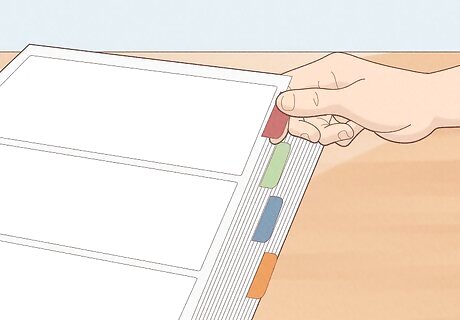
Create sections for your planner. Once you’ve organized your paper, it’s time to put it into sections as it will appear in your final product. You can mark your sections by placing a sheet of colored paper between them. You could also use dividers or stick-on divider tabs. Another option is to mark the sections with tape. Take a strip of tape and fold it over on itself so that just the edges of the tape touch the paper between two sections, leaving the fold of the tape sticking out of the stack. If you have post-it notes, you can use them as section dividers or to highlight important sections.
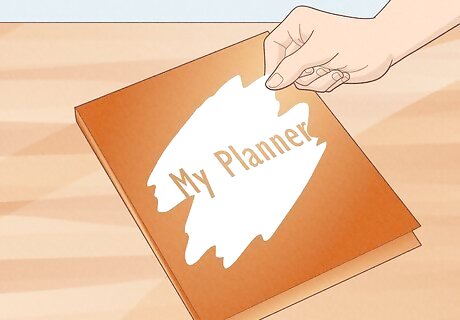
Design your cover. When you craft your own planner, you get to be creative with the cover. If you like to work on the computer, design your cover using your favorite app and then print it out. If you want to skip decorating your cover or want something that looks store-bought, use a piece of scrapbook paper from the craft store as your cover. For example, you could buy a piece of zebra print paper and print your planner title on the front. If you’re an artist, draw or paint your cover. If you don’t like to draw or craft, you could try decorating your planner with stickers that represent something you love, such as your hobby or favorite bands.
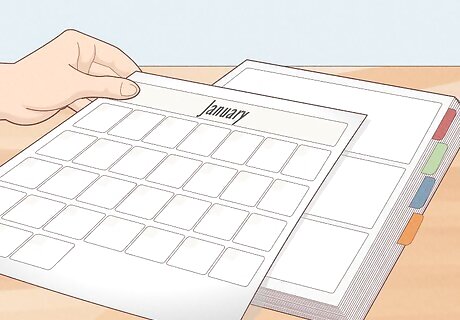
Decide what sections to include in your planner. Common section names will include monthly calendars, weekly planners, and to-do lists. You can also decide if this planner will be for all of your classes or just one of them. This could affect how many sections you decide to make.
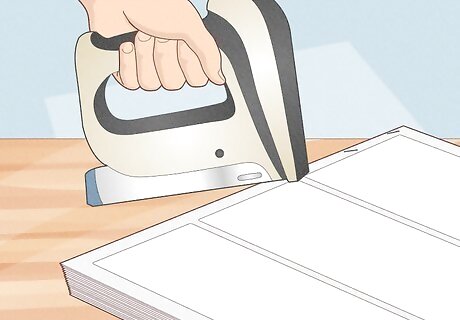
Bind your paper. Now that sections are clearly marked, it’s time to bind your paper. The simplest option is to staple the paper together. For a cleaner look, cut a two-inch-wide slip of paper and fold it so that it will fit over your staples. Glue the paper in place to make your homemade planner look like a composition book. You can also make a notebook using a hole punch and ribbon.
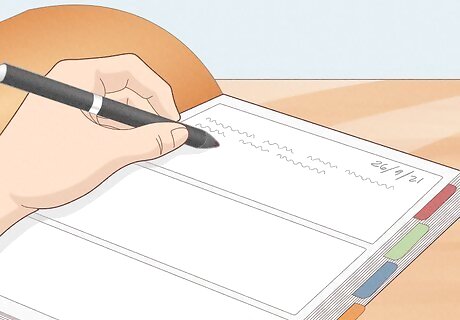
Write your assignments into your planner. Using your course syllabi or assignment sheets, copy all of your assignments into your new planner. Use the different colored inks for each class for the best results. If you're using your planner for just one class, you could use different colored inks for different types of assignments. For example, you could use blue for essays, orange for worksheets, red for tests, etc. Enter assignments for the whole grading period at once, which will prevent you from overlooking due dates. Divide your larger assignments over several days so that you have time to complete the assignment. For example, if you have a science project due at the end of the month, you need to start working on it in advance. Write your project workdays onto your calendar as well.
Using a Standard Notebook
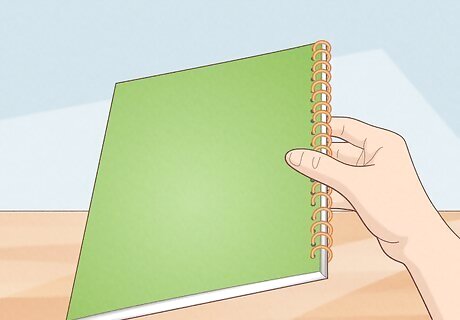
Choose a notebook. Get started by finding the perfect notebook for you, such as a composition book, spiral, or journal. While you can choose a nice print, decorating your homework planner is a great way to express yourself.
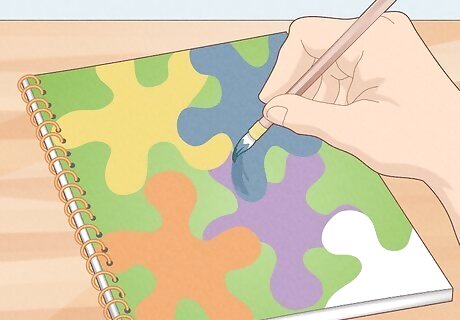
Decorate your notebook. Designing your cover gives you a chance to be creative, even if you don’t consider yourself an artist. You may decide to use ink or paint directly on the cover of your notebook, or you may find it more fun to glue on your decorations. If you’re artistic, take this as an opportunity to express your talent by sketching or painting your planner cover. Another option is to create a collage using clippings of photos, words, and phrases from a magazine. Simply glue the clippings to the cover of your notebook in your desired arrangement. To protect your work, self-laminate it with clear packing tape. If you enjoy crafting, you could glue fabric, paper, or magazine photos to your notebook. If you don’t like to draw or craft, you could try decorating your planner with stickers or photos. For example, you could cover your notebook with stickers representing your favorite bands, or you could print out your favorite photos of your friends to glue on the cover.
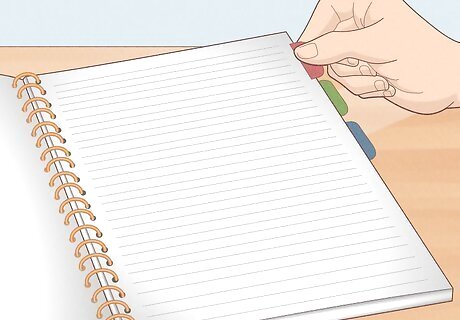
Divide your notebook into sections. Before you can use your newly decorated notebook as a homework planner, you need to create sections for your planning. Common sections will include monthly calendars, weekly planners, and to-do lists. Count out the number of sheets for each section. Because it’s your planner, how many sheets of paper you will need per section will depend on you. However, for a standard year-long planner, you would need at least 14 sheets of paper for monthly planning and 54 sheets of paper for weekly planning. Including extra sheets in each section will allow for section labels, do-overs, and section buffers. Create your section dividers by either using tape or cutting the edges of the paper. To make your dividers using tape, fold a piece of tape over on itself so that just the ends touch the paper. Leave a flap of tape sticking out from the paper so that you can easily see the divide between sections. You can also divide your planner by cutting the corners of two of your sections. For example, you could cut the top outer corner of the monthly calendars and cut the bottom outer corner of the weekly planning sheets, leaving your third section un-cut. This would allow you to easily find each of those three sections.

Label your sections. On the first page of each of your sections, create a label. You can write, draw, or use stickers. As an alternative, you could print out what you want your label to say, trim the excess paper, and glue it onto the title page.
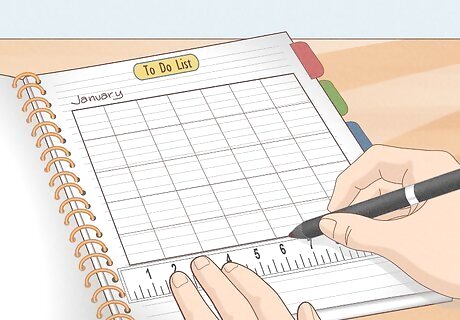
Create your calendars. Drawing or pasting in a calendar will allow you to better plan your assignments because you can see a month at a glance. You can also more easily plan out time to work on big assignments. To draw your calendar, you will need a ruler or a straight surface to trace. Using your ruler, draw a large box. Lengthwise, trace six evenly-spaced lines to create seven columns for the seven days of the week. Then draw four evenly-spaced lines down the width of the box to create the rows of weeks. When you are finished, you will have 35 boxes. Write the days of the week above each column. Write the name of the month and the correct dates for the first month of your homework planner.
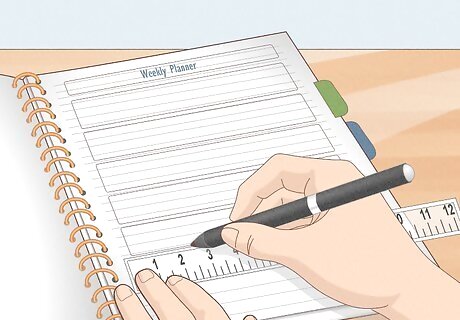
Make your weekly planning sheets. Much of your actual planning will happen in your weekly section, so it’s important to create those planning sheets. Fortunately, it’s very easy to organize your weekly plans by dividing your sheets into eight even boxes so that you will have seven for the days of the week and one extra box for notes. Draw a line down the center of your paper and then draw three evenly-spaced lines across your paper to create eight boxes. Label seven of the boxes with the days of the week, and label the eighth box “Notes.” Don't put down everything into your planner, because some deadlines are flexible. Otherwise, if you've already planned everything out but then want to do something differently, you'll have to replan everything.
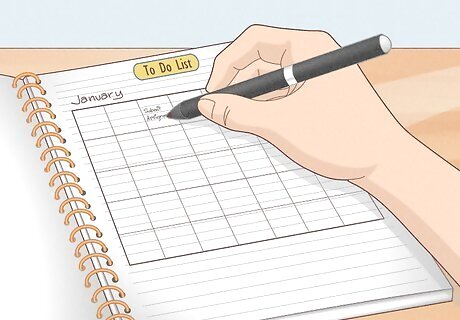
Insert your assignments. You’re now ready to use your homework planner! Use your syllabi or assignment sheets to fill in your assignments. Try organizing your tasks by things that need to get done soon within the next couple days, things that you can do next, things that you can do within the next week or two, and things that you'd like to do at some point in the future.
Using a Binder
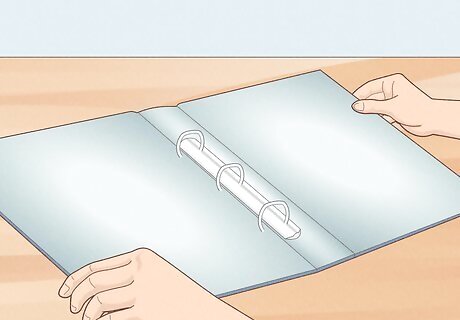
Choose your binder. When you pick a binder, remember to consider size. You could save space with a .5-inch binder, but you may find that you require more planning space, so using a 1- or 2-inch binder may be ideal. You can recycle an old binder or purchase a new one. To avoid adding bulk to your backpack, print out calendars and weekly planning templates and put them in your regular binder. That way you can easily track your assignments without worrying about juggling an extra notebook.
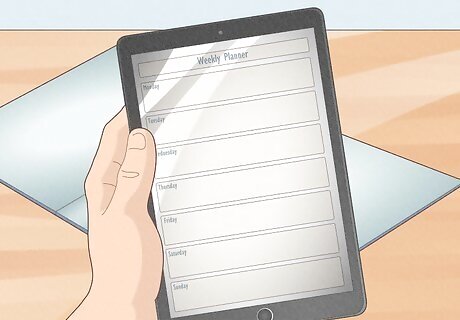
Decide how you want to plan. Most planners include sections for monthly calendars, weekly planning sheets, and to-do lists. Since you’re using a binder, it will be easy to add new sections later if you decide you need additional planning materials.
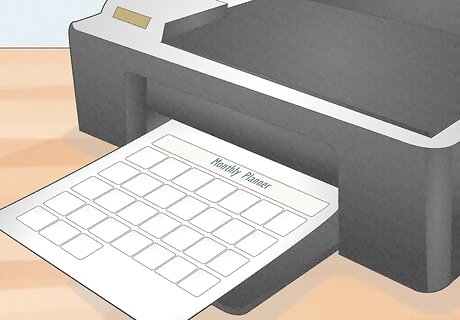
Print your planning sheets. Using either a template or your own design, print out the sheets you will need for each section. This will include blank calendars, blank weekly planning sheets, and your favorite to-do list organizer. You may choose to use regular notebook paper for your to-do lists.
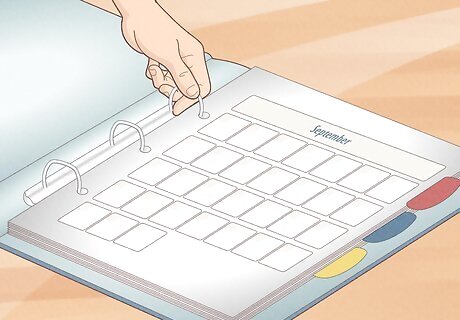
Insert your dividers and planning sheets. As you put in your planning sheets, you will want to separate them with standard index dividers for binders so that you can easily flip between sections. Using index dividers will also allow you to label each section for easy organization. Open the rings on your binder and first insert your to-do list paper. Place an index divider on top of the stack. Add your monthly planning sheets, followed by the index divider for that section. Finally, add your calendars, and, if you like, an index divider for that section. You may want to also add a special index page or key that explains your organizational strategy.
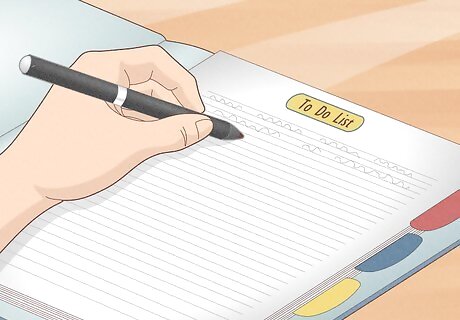
Enter your assignments. Your homework planner is ready to use! Use your syllabi or assignment sheets to schedule your assignments on your planning pages.




















Comments
0 comment